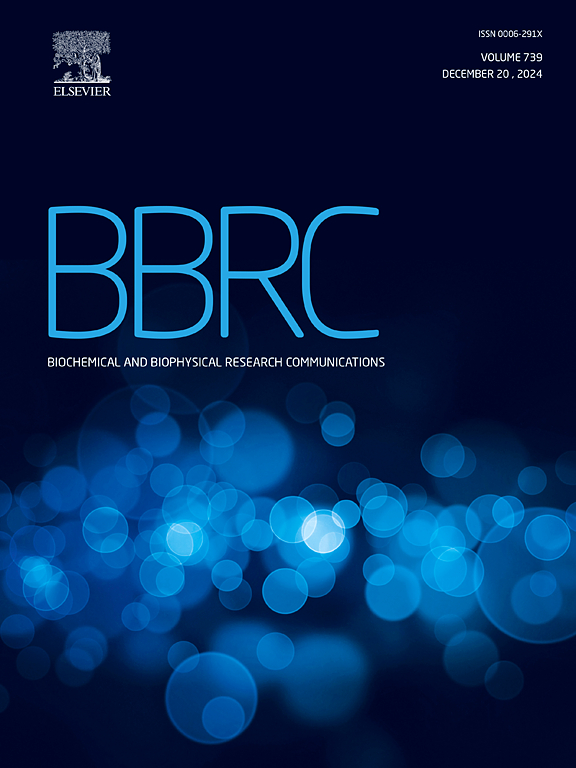StCPP3 interacts with type III secretion protein HrpB7 and negatively regulates plant resistance against Ralstonia solanacearum
IF 2.5
3区 生物学
Q3 BIOCHEMISTRY & MOLECULAR BIOLOGY
Biochemical and biophysical research communications
Pub Date : 2024-11-30
DOI:10.1016/j.bbrc.2024.151105
引用次数: 0
Abstract
Cysteine-rich polycomb-like proteins (CPP) are crucial in regulating plant stress responses while the underlying functions of CPP involving plant- Ralstonia solanacaearum interaction remain unknown. Here, we showed the expression patterns of a potato CPP gene (StCPP3) under phytohormone treatments, biotic and abiotic stressed and its role in resistance against of R. solanacaearum infection by loss- and gain-of-function approaches. StCPP3 expression were up-regulated with methyl jasmonate (MeJA) and abscisic acid (ABA) while down-regulated under salicylic acid (SA), brassinosteroids (BR), high salt or low temperature treatment. Silencing the homolog gene (NbCPP3) in Nicotiana benthamiana enhanced resistance to R. solanacaearum. Over-expressing StCPP3 in Arabidopsis increased susceptibility and decreased activity of some defense-related enzymes, suggesting its role in suppressing hypersensitive cell death and reducing PR1 gene expression. In addition, we found that StCPP3 could interact with Type III secretion protein HrpB7 from R. solanacaearum. These results provide new insight into the mechanism of CPP's involvement in plant-pathogen interactions.
求助全文
约1分钟内获得全文
求助全文
来源期刊
CiteScore
6.10
自引率
0.00%
发文量
1400
审稿时长
14 days
期刊介绍:
Biochemical and Biophysical Research Communications is the premier international journal devoted to the very rapid dissemination of timely and significant experimental results in diverse fields of biological research. The development of the "Breakthroughs and Views" section brings the minireview format to the journal, and issues often contain collections of special interest manuscripts. BBRC is published weekly (52 issues/year).Research Areas now include: Biochemistry; biophysics; cell biology; developmental biology; immunology
; molecular biology; neurobiology; plant biology and proteomics

 求助内容:
求助内容: 应助结果提醒方式:
应助结果提醒方式:


